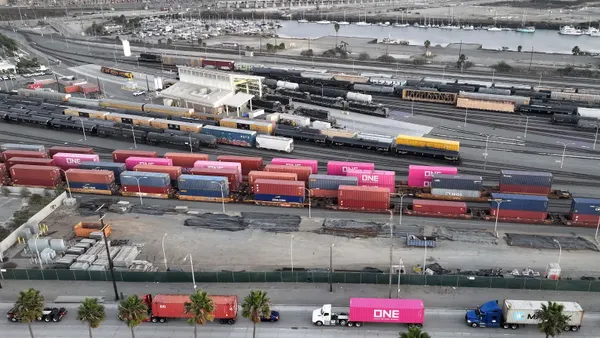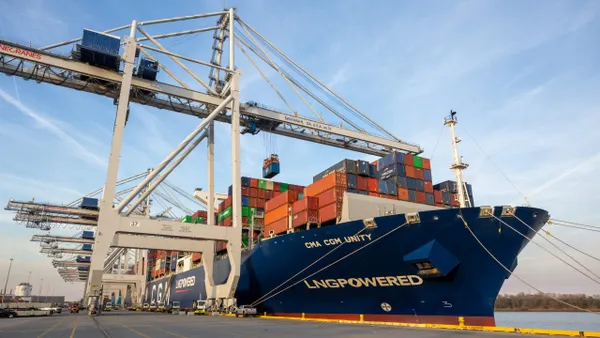Dive Brief:
- Wayfair is scaling up its logistics and freight forwarding operations in Asia and Europe in an attempt to improve supplier experiences, CEO Niraj Shah said on the company's earnings call last week.
- In Germany, the company is adding capacity for CastleGate, which is the name for its network of fulfillment centers, as it sees increased demand in the European market, Shah said. It currently has 17 locations in North America and Europe.
- Shah said the company's freight forwarding services have been particularly helpful in the current freight market. "This has been especially powerful given the upheaval and congestion in the ocean container market and has allowed participating suppliers to [maintain] steady flow of goods to the U.S. and Europe to keep their businesses on track," he said.
Dive Insight:
Wayfair outlines a platform that's more than just a marketplace for selling goods; it's an entire supply chain network that helps its suppliers get their inventory to market and allows Wayfair to have control of end-to-end logistics.
Similar strategies are also in play at other e-commerce platforms. Amazon allows sellers to use its platform while also offering a Fulfilled by Amazon option that allows third-party sellers to ship from Amazon's fulfillment centers.
But even as Wayfair builds out CastleGate and International Supply Chain, its ocean cargo and drayage services, it has not been immune to supply chain disruptions. The company mentioned port congestion leading to inventory issues in February — a problem that has continued.
"Earlier in the pandemic, inventory availability and outbound bottlenecks were the biggest sources of stress," Shah said last week. "More recently, inventory constraints have been magnified due to inbound issues, namely ocean container availability and port congestion. These are challenges faced by the entire industry driven by broad macro pressures."
The supply chain issues come as demand surges for e-commerce broadly, but also Wayfair specifically. The number of orders delivered from Wayfair's site was up nearly 49% YoY in the most recent quarter to reach 14.7 million, according to the company's financial filings.
"On the whole for our category, inventory availability and delivery times are sequentially improving, though it is in fits and starts and will likely take towards the end of the year to fully normalize," Shah said. "Though we cannot entirely avoid some of these challenges, our platform model and years of logistics investments put us in a position to weather them better than most and more significantly, to help extend these benefits to our supplier partners."
Shah said the company's scale and partnerships with carriers have allowed it to get its shipments prioritized despite disruptions. This means its suppliers don't have to act on their own when dealing with carriers and have the combined volume of other Wayfair sellers.
While Wayfair has scale on its side, shippers of all sizes have been looking for ways to improve the reliability of their ocean services after a year in which contracts lost out to the hot spot market. This has led to changes in how shippers contract with ocean carriers including agreements with two-way commitments, multiple tiers and prices that are linked to indexes rather than being set in place.















